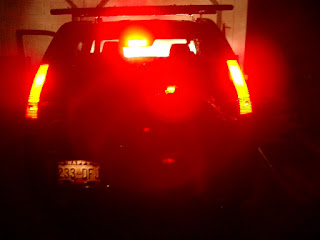Now I just have to finish the wiring in my velo so it is rideable any time. It is still missing the connections for the headlights and brake light with only the signal/running lights working.
Plastic drain for the rain gutter. The piece of tubing used as a drain for the rain gutter is now easily made. I just had to make some jigs to form the end of the tube rather than doing it free hand. I'll use the channel for the wires to hold it to the side of the velo.
Mirror fairing with the light in the front of it seems to be working out nicely. I had to come up with a slightly different clip to mount the mirror. The mirror mounts so it is almost touching the shell rather than on a stalk. I suspect that it will now be possible to mount it on most velos.
The Milan GT and Milan SL both come with suspension on all three wheels. I do have the plug for making the rear fender for the SL without rear suspension in the shop. I will move it out into storage where it can rest until some one really wants this version. I will take some convincing to do so!!!! The front suspension is the normal strut from Velomobiel.nl but with the stiffer spring in it. The rear suspension is a double sided swing arm with two suspension struts, one on each side.



































